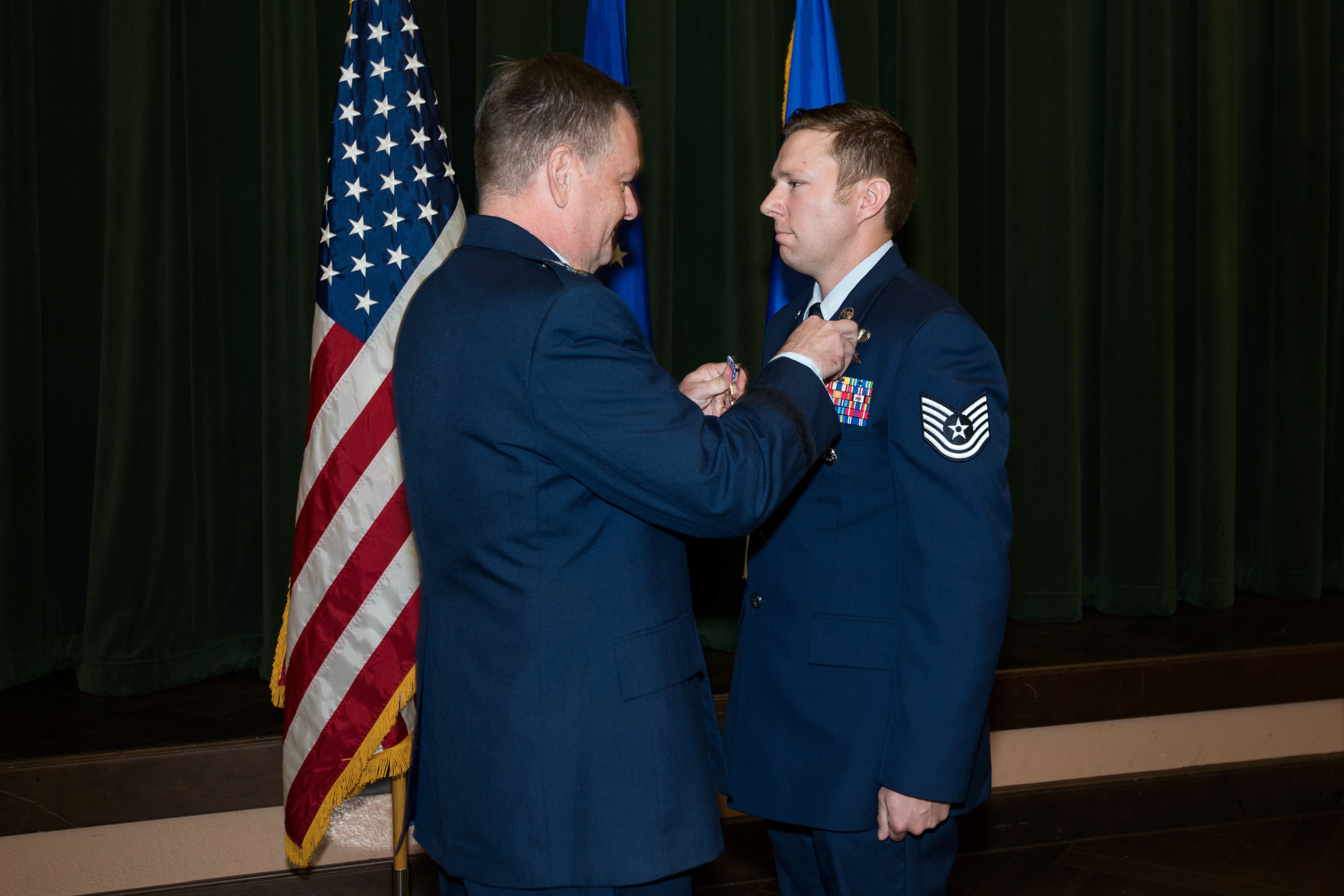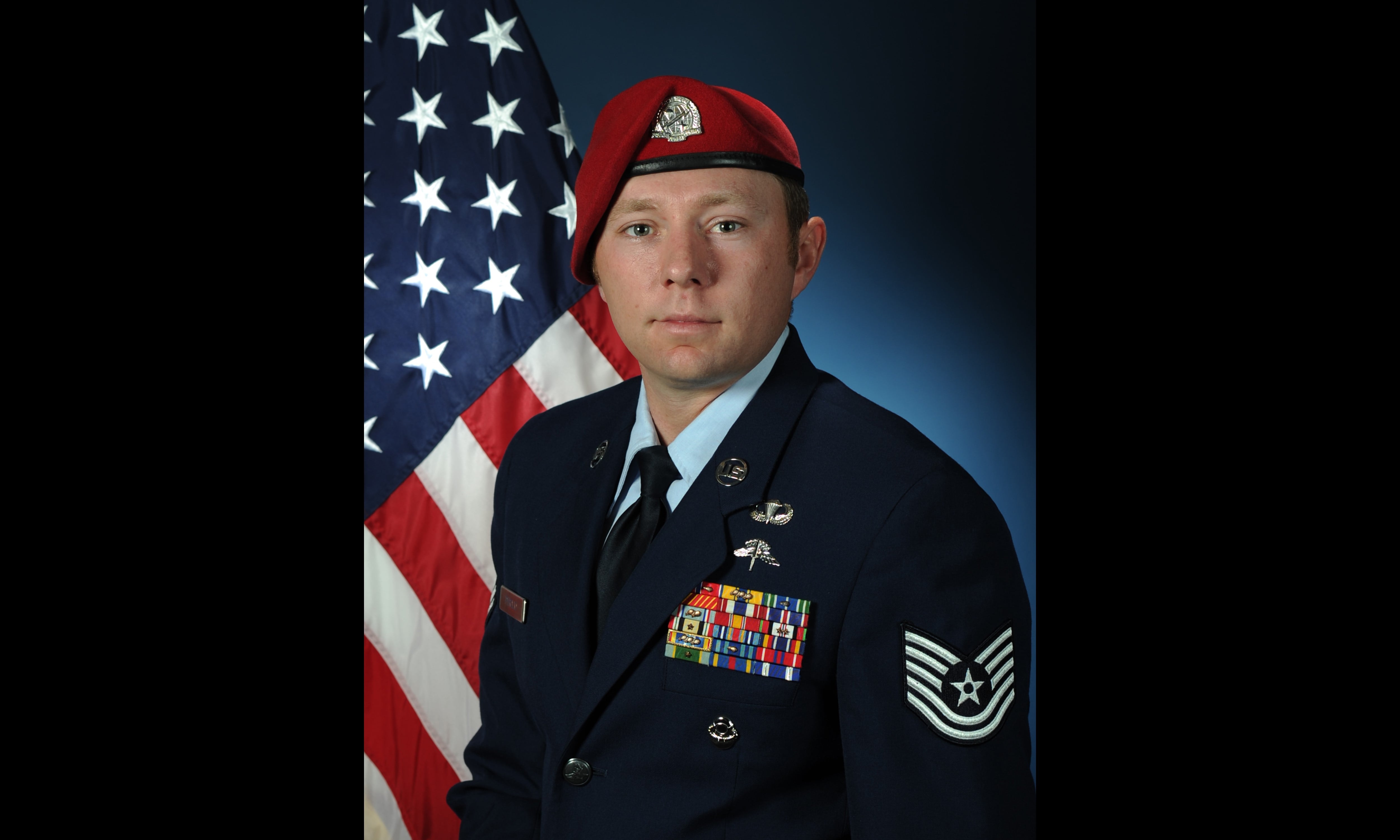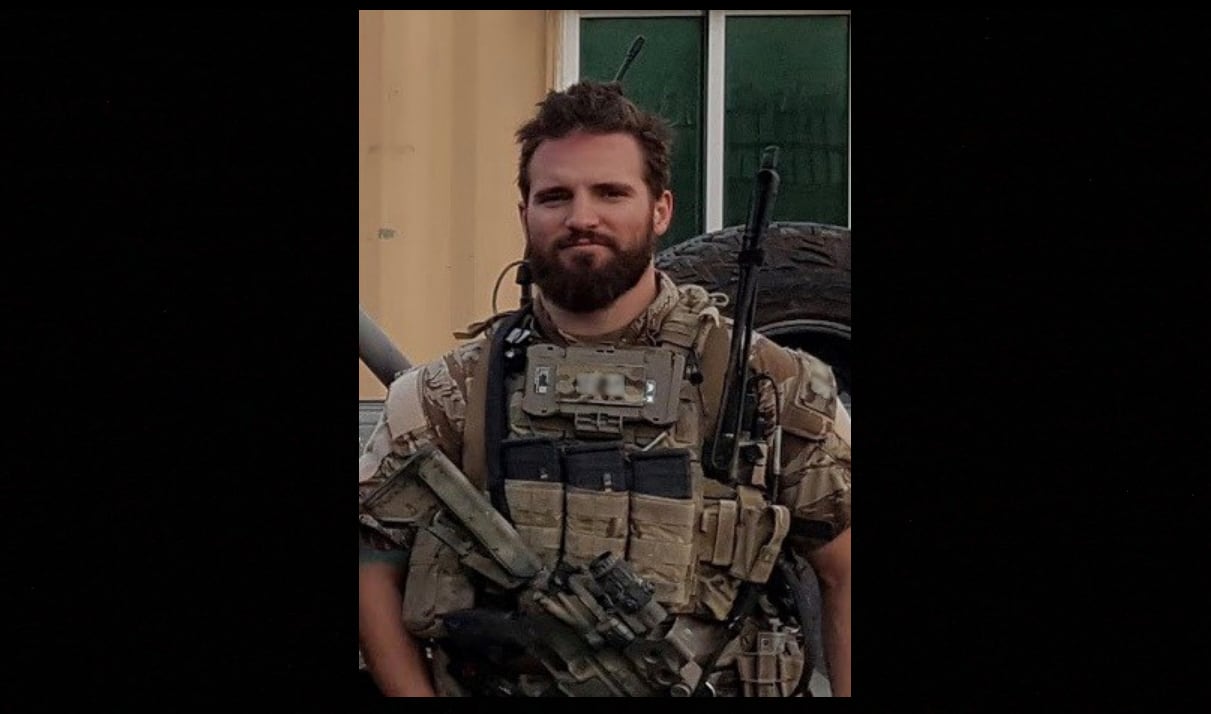A combat controller with the 350th Special Warfare Training Squadron at Joint Base San Antonio-Lackland in Texas received the Silver Star Thursday for his heroism during a rapid, intense, green-on-blue insider attack in Afghanistan in 2018.
Technical Sgt. Michael Perolio, who is now an assessment and selection instructor at Lackland, quickly took charge and rallied his teammates after an ambush erupted in a village in Nangarhar province Jan. 11, 2018. He swiftly organized fields of fire, called in airstrikes and rendered aid to his wounded comrades — all while repeatedly exposing himself to heavy machine-gun fire — as he hurried his team out of the kill zone and back to their camp.
“Perolio saved my life and the lives of several of my guys,” said Army Capt. William Clark, the ground force commander for the team, said in a release. Clark was severely wounded in the ambush.
“His actions ensured that we were able to make it home. He is a phenomenal joint terminal attack controller, a great friend and someone I consider a brother. I honestly can’t thank him enough for what he did.”
Perolio was the JTAC for a team of Army Green Berets with Special Forces Operational Detachment Alpha 0221, which partnered with the Afghan 8th Special Operations Kandak Commandos in Mohmand valley in Nangarhar’s Achin district.
The unit had an ongoing operation to clear the valley there, Perolio said in a Wednesday interview with reporters.

As they pushed deeper into the valley from their small outpost, they began working with a group informally called the People’s Uprising Militia. Complicating matters, some of those valley residents were former Taliban who were opposed to the Islamic State of Iraq and ash-Sham-Khorosan, or ISIS-Khorosan, which had invaded their territory.
The militia was intended to be the “hold force” after Americans cleared out territory, to allow civilian Afghans to return to the villages and keep ISIS at bay.
On the day of the battle, Perolio volunteered to be part of a five-man team to head out to a nearby village and meet and build a relationship with the elder there, who was essentially a sub-commander for the People’s Uprising Militia. The team, which consisted of Perolio, Clark, another Green Beret, their Afghan interpreter Ali and an Afghan regional commander for the militia guiding them through the checkpoints, set out in a light unarmored all-terrain vehicle.
They met with the village elder to discuss what the Afghans needed and what they planned to do to push ISIS back.
“Everything seemed pretty normal as we were loading up in the vehicle [and] saying goodbye,” Perolio said. “As soon as Captain Clark turned the vehicle on and was trying to shift into gear, they opened up on us with a PKM machine gun.”
The entire vehicle was riddled with PKM rounds from a building to their left, 50 meters away, and the team spilled out the vehicle’s right-hand side to take cover. Clark was immediately shot twice, in his abdomen and leg, and the two Afghans were also shot. The interpreter was shot three times in his leg, and the militia commander was shot through his femoral artery. He quickly bled out and died.
The remaining members of the team quickly tried to figure out what had happened. Clark said he initially thought the fire was coming from higher ground, not the building.
At first, they thought an ISIS team had snuck into the area, but then soon realized the reality was much worse.
“We didn’t realize it was our militia buddies who had turned on us,” Perolio said.
The fire was overwhelming, but Perolio took charge right away and rendered aid to his wounded comrades. Though Clark was severely wounded, Perolio re-armed and rallied his ground force commander to cover the south.
“Hey, I need you to watch this way,” he told Clark. “I know you’re messed up, but I don’t know what’s coming that way.”

RELATED

Perolio directed the other Green Beret, who was not wounded, to cover their backs to the north while he assessed the situation. They all tried to patch each other up as best they could, with Clark applying a tourniquet to Ali’s shot-up leg, while he himself was wounded.
Perolio got on the radio to aircraft flying overhead to get their sensors and targeting pods on the area, and called back to their base to get the medical staff ready for incoming casualties.
They piled back into the vehicle and got out of there as quickly as possible. They hooked up with a quick reaction force, and gave its chief warrant officer — who had now effectively taken Clark’s place as the operation’s ground force commander — the situation. Perolio got the OK to call in F-16 airstrikes on the building where the ambush was launched, destroying 12 now-enemies and their machine gun nest with four 500-pound bombs, as well as another bomb that airburst.
They floored it the four kilometers back to base and rushed Clark into surgery, where his chest was opened up and he was stabilized, and the medical team stopped Ali’s bleeding. They were then medevaced back to Bagram Air Base for more in-depth care, and Clark was later flown to Germany for more treatment, where he woke up four days later.
The entire battle and return to base happened very quickly, in about 15 minutes. Clark said the 10-minute drive over extremely rugged roads back felt much longer. In a sign of how fast they were going, Clark said that drive typically took 25 minutes.
But a part of that militia had severely betrayed the Americans, and that had to be addressed. Perolio said that shortly after getting Clark and Ali safe, American troops and their Afghan partners went back out to all the People’s Uprising Militia checkpoints in the valley.
The Afghan commandos took all the weapons and equipment from the militia members and took them out of the valley “until we could figure out what the next step was, and if we could utilize them again, or if we had to worry about more insider attacks happening,” Perolio said.
In the fallout from that ambush, Perolio said, there were rumors that some Afghans wanted retribution, so the U.S. camp ramped up its security for a while. Fortunately, he said, they had a good relationship with the Afghan commandos with whom they had trained, lived and partnered. The commandos had the Americans’ backs, and helped bridge that gap.
In a series of meetings with the militia afterwards “we were able to come to terms and help them get back into the valley,” Perolio said.
Clark is glad Perolio is being recognized with the Silver Star for what he did that day, under horrible circumstances.
“It’s pretty outstanding to be able to see him get something like this, and for him to get the recognition that he deserves,” Clark said.
Perolio has deployed three times to Afghanistan, and once to Iraq. This deployment lasted from October 2017 to March 2018.
Perolio has long looked up to combat controllers who were honored for their bravery with Silver Stars.
“It’s super humbling to be able to say that I’m a part of that now,” Perolio said. “But I also know there’s a ton of guys out there, and guys still out there, doing the combat control mission and the Green Beret mission, going through some similar situations, who may or may not get that recognition. It’s not lost on me how special that is.”
Stephen Losey is the air warfare reporter for Defense News. He previously covered leadership and personnel issues at Air Force Times, and the Pentagon, special operations and air warfare at Military.com. He has traveled to the Middle East to cover U.S. Air Force operations.





